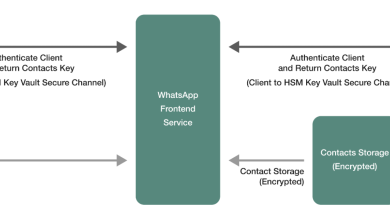15 Growth Marketing Strategies that Work in 2024

A growth marketing strategy might sound like a redundant concept to brands in 2023.
After all, every marketing strategy is intended to help grow a business, so it’s easy to assume that all marketing is actually “growth marketing.”
However, growth marketing is actually a very specific branch of the advertising world. It involves going beyond the basics of simply attracting customers to the top of your funnel of generating awareness. Instead, growth marketing paves the way for sustainable development.
The challenge for many marketers is figuring out how to implement effective growth marketing strategies in a world where consumers, platforms, and advertising best practices are changing.
Knowing how to experiment and innovate with your marketing campaigns in an environment where marketing budgets are dwindling takes some serious creativity.
But, used effectively, growth marketing can help you not only grow your customer base but retain your crucial existing customers too.
Here’s your guide to the growth marketing strategies that still pay dividends in 2023.
What is Growth Marketing?
Before we look at some of the best tactics for your growth marketing strategy in 2023, it’s worth taking a moment to define what growth marketing actually is.
Traditional marketing is an approach to promotion that focuses on short-term, campaign-oriented goals. More often than not, it focuses on the “top of the funnel,” generating awareness and demand for products, services, and brands.
In traditional campaigns, companies review their approach to marketing on a regular, annual, or semi-annual basis, making changes gradually over time.
Growth marketing takes a more agile approach. With growth marketing, businesses focus on using data and insights to improve business outcomes throughout the entire customer journey.
The underlying idea is that by experimenting with different tactics, monitoring results, and taking a holistic view of the customer experience, businesses can achieve and retain consistent growth.
In a growth marketing strategy, companies add layers to their marketing campaigns, using A/B testing, cross-channel strategies, and innovative technology to unlock greater benefits.
Strategies for growth marketing evolve over time based on the evolution of industry trends, customer requirements, and new technology. This makes growth marketing a more effective way to stay one step ahead of the competition in your industry.
15 Growth Marketing Strategies for 2024

Notably, companies investing in growth marketing rarely focus on a single tactic.
One of the core pillars of growth marketing is constant experimentation. This means you’re likely to use a number of different strategies throughout the years to learn more about which campaigns are most likely to engage and convert your audience.
Today, we’re focusing specifically on the growth marketing strategies that are still driving results for businesses in 2023, despite the rise of things like ChatGPT and new search algorithms.
1. Full-Funnel Content Marketing
Content marketing isn’t just a growth marketing strategy. Around 70% of B2C marketers and 73% of B2B marketers are consistently using content to connect with their audience. The difference between a standard content marketing campaign and one tailored for growth is a holistic approach.
Rather than just looking for ways to draw attention to your brand, you think about how you can generate value for your customers throughout the entire customer journey, before, during, and after a purchase. This means mapping your customer’s journey from start to finish and creating content that appeals to every stage in the funnel.
A great example of this comes from HubSpot. The company focuses so heavily on content marketing you’re likely to find a web page on Google when searching virtually any marketing term. HubSpot produces blogs to appeal to every one of its customer segments, from sales professionals to service experts. It also explores a range of different types of content.
There are free courses and certifications available which teach customers how to use the HubSpot tools more effectively after a purchase. Case studies show customers why they should consider buying HubSpot in the first place. While blogs and eBooks generate audience attention.
The company makes use of both paid and organic social media opportunities and even hosts regular webinars, which earn thousands of registrations on a consistent basis.
2. Innovative Search Engine Optimization

Search engine optimization and content marketing generally go hand-in-hand. Even in a world where search engine algorithms are changing, thanks to the inclusion of generative AI technologies in search systems, SEO is still crucial for engaging and attracting leads.
SEO is a powerful growth strategy because it doesn’t just help customers to find your products and services when they’re in the early stages of the purchasing funnel. Good SEO will consistently help you to connect with your audience over time.
The higher your website ranks, the more authority you’ll gain in the eyes of your consumers, increasing loyalty and retention. However, investing in SEO for the new age of marketing does require companies to take a slightly different approach.
It’s not enough to simply choose the right keywords and post content constantly anymore. Companies need to go in-depth with their SEO strategies, focusing on user experience and value. Learning strategies like how to find hidden APIs can optimize your site resulting to faster and smoother UX.
In some cases, this also means adapting to new kinds of search strategies. There are more than 4.2 billion voice assistants in the world as of 2023, and voice-based search is growing more common every day. Adapting your SEO strategy to include more natural language keywords could be crucial to generating growth in the years ahead.
A good way to do this is to find ways to answer common customer questions. An FAQ page, such as YouTube’s clean, fresh, and convenient FAQ section, is excellent for appealing to voice search engines. It even helps YouTube to rank at the top of the search engines for specific queries in featured “snippets” on Google search results.
Communities have emerged as an essential part of the digital landscape in recent years. The rise of social media combined with increasing interest in sites like Reddit, is pushing companies to invest more heavily in ways to engage and consistently connect with customers.
Building a community for your customers is a fantastic way to make sure your customers feel more invested in your brand. It forms emotional connections that lead to better customer retention, longer lifecycles, and even the creation of brand ambassadors and advocates.
An excellent example of the power of community comes from GitHub, the developer platform that built community elements directly into its product offering. GitHub encourages coders to come together to work on projects and solve problems in an open environment.
There are contribution-tracking features, options for following projects, and even competitions and challenges hosted on the platform, to bring people closer together. It’s this approach to community development that helped GitHub to earn more than 100,000 users within its first year.
What’s more, GitHub’s community environment provides the company with an in-depth insight into its target audience. Nurturing your community is an excellent way to learn more about the problems they face, the goals they want to accomplish, and the issues they need to solve.
4. Referral Programs

Speaking of activating your audience, referral programs represent one of the most powerful and useful growth marketing strategy options in the world today. As customers become more desensitized towards traditional marketing methods, they’re becoming more reliant on the opinions of others.
In fact, 92% of customers say they trust referrals from people they know. Referral marketing is your opportunity to take advantage of the enduring power of word-of-mouth advertising.
An excellent and frequently referenced example of the power of referral marketing comes from Dropbox. Instead of rewarding users with financial incentives when they sent a referral to the business, the company offered increased storage space.
Every friend who introduced a new user to Dropbox would receive an extra 500MB of free storage, with a limit of around 16GB. This program was so successful it drove a 3900% growth in just 15 months. Dropbox enhanced the impact of its referral program by offering two-way rewards (For both users) and even adding referral options to its onboarding process.
Another example comes from Sephora’s Beauty program, which consistently rewards customers not just for referrals but also for actions like simply making a purchase.
5. Leveraging Customer Psychology
Growth marketing is often a combination of art and science. It’s about connecting with your audience on a deeper level, leveraging their emotions, interests, and sometimes even their fears.
In today’s complex economy, buyer cycles are growing longer all the time. Customers are increasingly concerned about making the “wrong choice” with their purchase, so they’re much slower to make a purchase. This can lead to a lot of abandoned carts and lost sales.
Leveraging customer psychology is an excellent way to push people to act faster. For instance, countless companies use “Fear of Missing Out” or “FOMO” tactics on their store or website to create a sense of urgency among their consumers.
Visit Booking.com, and you’ll notice the company constantly draws attention to how many rooms, apartments, or bookings are available at any given time. Amazon takes a similar approach, showing how many items are left in stock at any given time.
In 2023, there are plenty of new ways to implement FOMO into your marketing campaigns, from using dynamic alerts on your website to show when other customers make a purchase to running limited-time sales and discounts.
6. Hyper-Personalization

Around 99% of marketers say that personalization helps them to build stronger relationships with customers. Since the best growth marketing strategy will always focus on both customer acquisition and retention, this makes personalization a key tool for any business leader.
Thanks to a variety of data collection tools and emerging AI solutions capable of adapting product suggestions and recommendations to customer needs, it’s never been easier to implement personalization into your marketing strategy.
Netflix, Amazon, and Walmart all use generative AI to recommend solutions to their audience based on previous purchases, browsing history, search terms, and other factors. Another excellent example comes from Spotify. The music-sharing company takes advantage of the data that customers are willing to share about their listening habits.
Using machine learning models, Spotify recommends new tracks to users based on their listening history, turning its platform into a “discovery” environment for music lovers. The company even runs regular “Spotify-wrapped” campaigns to highlight customers’ listening habits for them.
This not only leads to a more personalized experience for customers but it also ensures Spotify has a way to encourage customers to share their Spotify experiences with others. In 2020, Spotify wrapped increased the company’s mobile app downloads by around 21% in just one week.
7. Re-Engagement Campaigns
A growth marketing strategy should help you to maintain your connection with your existing customers for as long as possible, increasing customer lifetime value and revenue. According to one study, a company can increase its growth by 50% just by minimizing its churn rate.
Re-engagement strategies are relatively easy to implement in today’s world. You can experiment with retargeting campaigns across paid advertising platforms like Facebook and Google, designed to draw customers back to your site. Email marketing automation tools make it easy to send cart abandonment messages to customers with personalized recommendations.
There are even CRM tools that can help you track engagement levels among your consumers so you know instantly which segments need further attention. Groove used behavioral segmentation to identify people who have gone dormant in their subscriber list and reduced their churn rate to 1.6%.
Old Navy is an excellent example of a company using re-engagement tactics to its advantage. When customers stop clicking on email campaigns and making purchases, they send messages asking customers to update their email preferences, so they can send more valuable content. They also ask customers for their birth date in exchange for a free treat on their birthday.

8. Event Marketing
As the digital world grows more crowded and consumers seek more emotional connections following the pandemic, event marketing has become increasingly popular. According to some studies, 48% of brands achieve ROIs of up to 500% with the right event campaigns.
Event marketing can be particularly useful for business owners who want to achieve growth in the B2B landscape. Around 97% of B2B marketers believe live events have a significant impact on their business outcomes.
Events deliver a number of benefits to businesses searching for growth. They offer an opportunity to connect with customers in a more face-to-face environment than most advertising campaigns. Plus, they’re a great way to demonstrate thought leadership.
In today’s world, events don’t have to be in-person to deliver excellent results. Around 93% of event marketers say they’re planning on hosting virtual events going forward, which include online video streams, webinars, conferences, and even AR and VR-based events.
For instance, the Microsoft team runs a host of regular events, both in-person and online, for anyone to attend. Each event is tailored to the needs of a specific audience, from business leaders to developers and even everyday consumers.
The events give the company an opportunity to network, exchange e-business cards, and share updates about its latest releases and products, as well as a way to build buzz about business news.
9. Disruptive Marketing

As mentioned above, many growth marketing strategies focus on experimentation. Sometimes, generating rapid growth means finding ways to think outside of the box and connect with your customers on a different level. Disruptive marketing is all about flipping the script with traditional marketing techniques, using experiential experiences and new technology.
While the initial results of disruptive marketing campaigns may be short-lived, they’re an excellent way to demonstrate thought leadership and build excitement around your brand. Disruptive marketing can also be a powerful way to set yourself apart from the competition.
The key to disruptive marketing is to find ways of reaching your audience that haven’t been done before. A great example comes from Netflix, which knows how to connect with its audience both online and offline. After the success of Squid Game in 2022, Netflix began installing “red light, green light” dolls in various locations around the world to celebrate the renewal of its popular show.
The dolls interacted with people, allowing them to win prizes if they were able to complete the game successfully. This gave Netflix an excellent opportunity to build hype for a show that would only be released again a year later.
10. Influencer Marketing
The rise of the creator economy in recent years has only made influencer marketing more powerful. As mentioned above, today’s consumers are looking for guidance from reputable sources to help them determine which products and solutions they should buy.
By 2025, influencer marketing is set to have a value of around $24.1 billion as more companies partner with innovators to help them reach their target audience. TikTok and Instagram have even launched creator marketplace tools, making it easier for brands to collaborate on campaigns.
Investing in influencer marketing for growth in 2023 will require companies to take a slightly different approach. There’ll be a greater focus on micro-influencers and more natural, authentic content in the years ahead.
Instead of simply paying celebrities to support pre-designed campaigns, business leaders will need to think about how they can collaborate with influencers more effectively to create content.

For instance, Fashion Nova has grown its brand considerably over the years, thanks to its investment in influencer marketing. The company has around 5,000 influencers working with it to share content that feels authentic, realistic, and natural. In fact, the marketing strategy has been so successful for the brand; the company managed to sell more than $500 million in 2021 alone.
11. Empowering Existing Customers
Since a strong growth marketing strategy focuses on customers throughout their entire purchasing lifecycle, it’s important for brands to think about how they can empower existing users. Traditional marketing efforts only concentrate on capturing sales.
However, effective growth marketing efforts look for ways to delight and engage customers after they’ve made a purchase. Creating a powerful onboarding strategy, leveraging concepts like gamification, can be an excellent way to increase the customer lifetime value of each of your consumers and improve your results over time.
Teaching customers how to use your products with the right onboarding strategy means they’re more likely to feel loyal and committed to your brand. A good way to get started is to evaluate the issues your customers might have with your product or service, then create an onboarding program that allows them to seamlessly address those concerns.
For instance, the Shine company boasts an onboarding completion rate of around 80% by providing customers with progress bars to help them move through the process and offering step-by-step guidance every step of the way. They even shower their customers in digital confetti when they complete a stage of the onboarding process.
12. Social Proof
We’ve already mentioned that customers are relying more heavily on input from other consumers to help them make purchases these days. They want to see genuine evidence that every company they work with can actually deliver the results they’re looking for. That’s where social proof comes in.
Social proof in your growth marketing strategy makes it easy for customers to make intelligent purchases, using reviews, quotes, and testimonials to guide them. You can generate social proof in a range of ways, from using branded hashtags to encourage user-generated content to recruit brand ambassadors and influencers to work with your company.
One excellent example of a company that knows how to leverage the power of social proof comes from Airbnb. The company found around half of its guests generally visit a host profile at least once before making a booking. A host without reviews was four times less likely to get a booking.
With these insights, Airbnb decided to make it easier for consumers to leave reviews. Using a double-blind review system, Airbnb allows visitors to review the hosts they book with, but it also encourages hosts to review their customers. The parties are also both encouraged to write a review within 14 days so the experience is still fresh in their mind.
13. Using Freebies to Increase Sales

Everyone loves getting something for free. As consumers become more concerned about how they spend their money, they’re increasingly looking for ways to ensure they’re going to get a good deal before they pay for anything.
Product demos and free trials can be an excellent way for companies to drive growth, particularly in the SaaS industry. With a “freemium” product strategy, organizations give their customers a chance to trail their product or service, see its benefits, and develop an interest in the solution.
For instance, True North gives companies access to a free trial of its growth marketing platform, where they can access all of the most valuable tools the business has to offer. The idea is that by the end of the trial, customers will be so reliant on the software they won’t want to lose it.
In web development, you will see companies offering free admin dashboard templates while cross-selling their premium ones.
Free tools can also be an excellent way to showcase the credibility and value of a business. For instance, CrazyEgg offers a range of free tools customers can access to help with keyword research and other marketing tactics. All they need to give in exchange is their email address, which means the company accesses leads it can nurture in the future. In a similar vein, if you’re operating an online shirt printing business, offering a free design tool can hook potential customers.
14. Solving Problems
The businesses that grow the fastest, and retain their growth the longest, are generally the ones that can actually solve crucial problems for their target audience. Most companies start with a focus on a specific pain point that they want to address for their target audience.
However, as your customers evolve and the market grows, you may find the priorities of your buyers change over time. That’s why it’s so important to invest in consistently collecting data from your customers in the form of a consistent feedback loop. Asking customers to share their concerns, issues, and problems with you on a regular basis can drive amazing opportunities for growth.
With feedback from customers, businesses can invest in new strategies and solutions that set them apart from the competition and ensure ongoing loyalty. For instance, Microsoft is constantly upgrading its Teams platform based on feedback from its community.
The company creates open platforms and environments where customers can ask questions, request new products, and even track the innovation timeline of the business. Using this strategy, Microsoft is able to constantly stay up to date on what its customers really need.
Microsoft’s feedback loop and approach to problem-solving have turned Teams into one of the most popular apps of all time, with more than 280 million monthly active users as of 2023.
15. Cross-Channel Marketing

Finally, one of the best ways to enhance your growth marketing strategy in 2023 is to expand beyond the basics of your marketing mix. Digital transformation offerings have accelerated in the last few years, leading to customers finding a host of new ways to connect with their favorite brands and enhance their purchasing journey. They expect companies to take a multi-channel approach to engagement.
With cross-channel marketing, you connect with customers on all of the channels they use on a regular basis, using tools like SMS messaging, push notifications, in-app messages, social media, direct email, and other channels. This ensures you can connect with your audience regardless of where they are and maintain a relationship over time.
The key to success with cross-channel marketing is understanding where your customers actually interact with your industry and your business. Mapping the customer journey with data analytics and insights will allow you to determine touchpoints for growth.
For instance, Mercedez Benz has a fantastic cross-channel marketing strategy that combines paid, owned, and earned media with a community-building strategy. The company also ensures its connection with its customers on social media, using key influencer campaigns.
The company uses branded hashtags on Instagram and micro-influencer accounts to connect with customers on a deeper level and keep them up to date on product releases.
Bonus Tip: Constantly Track and Measure
With every growth marketing strategy mentioned above, business leaders should be able to not only increase their access to new customers but retain more of their existing buyers. However, it’s important to remember that growth marketing requires consistent work.
With growth marketing, you don’t just implement a campaign and then review your results several months later. You need to be committed to constantly collecting data from every campaign and experimenting with different strategies.
Constant A/B testing is essential to a strong growth marketing strategy. You’ll need to experiment with your content, your marketing methods, and even the targeting tools you use to ensure you’re getting the best ROI from each campaign.
Growth marketing requires an investment in constant measurement and the use of the right KPIs and metrics to track the results of your efforts. Make sure you’re investing in the right tools to ensure you can constantly analyze the outcomes of your campaigns.
More importantly, make sure you’re willing to make changes rapidly based on the results you gather. Don’t be afraid to experiment constantly to upgrade your results.
Choosing the Right Growth Marketing Strategy for 2023
Growth is something every business wants to achieve. While it’s not the only metric worth monitoring when you’re building your company, it’s something you should constantly focus on with your marketing efforts. Investing in the right growth marketing strategy could be crucial to unlocking the true potential of your business and connecting with new and existing customers.
The methods outlined above are all tried-and-tested examples of growth marketing strategies that can help you to form deeper relationships with your target audience and increase your revenue. Used correctly, they can ensure you not only achieve your growth goals but maintain exceptional growth for years to come.
If you’re struggling with unlocking the potential of growth marketing, connecting with the experts can help. Reach out to Toptal today to find a growth marketing professional who can work with your business to deliver new opportunities.



